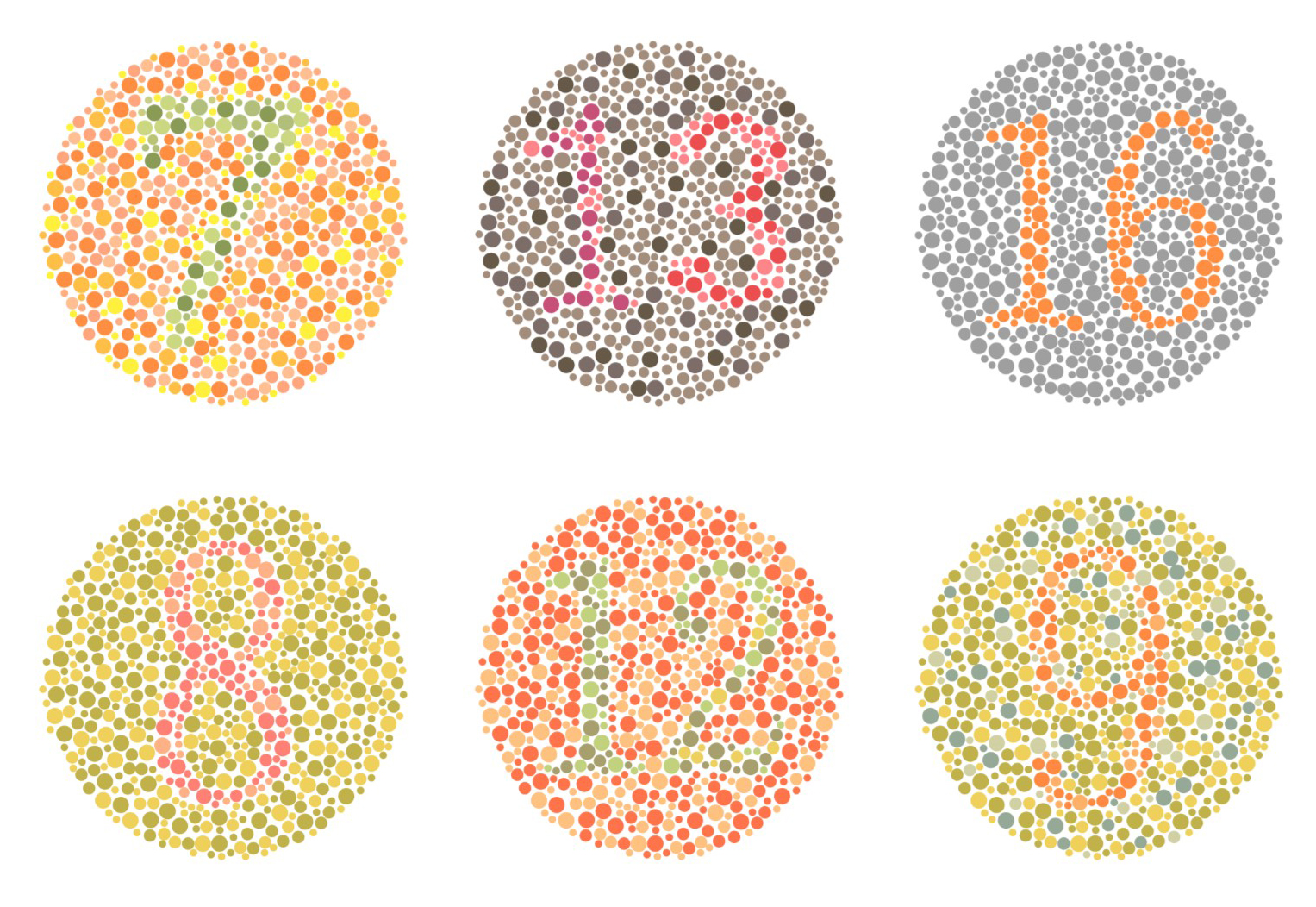Last Updated: March 27, 2023
Colour deficiency occurs when an individual has a decreased ability or inability to distinguish colours.1 Colour deficiency is more common in males than females, affecting 1 in 12 males.2 Colour deficiency is more commonly known as colour blindness, but they are two different conditions.
What causes colour deficiency?
Colour deficiency is usually an inherited condition, passed from father to son. It can also result from certain eye conditions, trauma or as a side effect of some medications.
What are the different types of colour deficiency and blindness?
There is one type of colour blindness (achromatopsia) and three types of colour deficiency: two different types of red-green deficiency (protanope and deuteranope) and one blue-yellow deficiency (tritanope).
Red-green deficiency
The red-green deficiencies are by far the most common and are often inherited. Individuals with red-green deficiency have difficulty distinguishing between shades of red, orange, brown, and green.
- Protanope – unable to perceive red wavelengths of light
- Deuteranope – unable to perceive green wavelengths of light
Blue-yellow deficiency
Blue-yellow deficiency is rare and generally acquired after damage to the optic nerve. Individuals with blue-yellow deficiency have difficulty distinguishing light blues with grays, dark purples with black, greens with blues, and oranges with reds.
- Tritanope – unable to perceive blue wavelengths of light
Colour blindness
The term “colour blindness” is frequently used to describe people with “colour deficiency”. However, only a very small percentage of people are truly colour blind which is a complete inability to distinguish colours such that everything is seen only in shades of black and white.
- Achromatopsia – unable to perceive any wavelength of colour
Video: What is colour blindness? | Dr. Shawn Poitras

Photo: Typical Colour vision test (From left to right: Top row: 7, 13, 16 | Bottom Row: 8, 12, 9)
How is colour deficiency detected?
Children who are colour deficient are generally unaware of their condition. They assume that everyone sees things the way they do. To detect colour deficiency, a comprehensive eye exam, including a colour vision test, is recommended for every child. Colour vision tests typically involve a series coloured plates with numbers or shapes, such that it can be detected by those with normal colour vision.3 A person with colour deficiency will either see a different number or is unable to distinguish the plate. An arrangement test with D15 is another common colour vision test.
When should a person be tested for colour deficiency?
Every child should be checked for colour deficiency by age five. Early detection is important because colour-coded learning materials are used extensively in the primary grades. In addition, colour deficiency may affect the career path of an individual, as the ability to distinguish colours is an important aspect of some jobs, such as pilots, electricians, military personnel, police officers and others.
Can colour deficiency be cured?
There is no cure for colour deficiency. However, a person with colour deficiency can learn proper colour naming and be able to accurately distinguish colours through recognizing other cues. For example, the brightness and location of a traffic light can be used to distinguish the red light from the green light rather than the colour itself. In addition, special filters in the form of glasses or contact lenses may be used to increase the ability to distinguish colours. For example, a special red tinted contact lens can be used in one eye, to aid people with certain colour deficiencies.4 To learn more about colour vision, talk to your optometrist.
References
- Birch J. (2001). Diagnosis of defective colour vision.
- Birch J. Worldwide prevalence of red-green color deficiency. J Opt Soc Am A Opt Image Sci Vis. 2012;29(3):313-320.
- Dain SJ. Clinical colour vision tests. Clin Exp Optom. 2004;87(4-5):276-293.
- Siegil IM. The X-chrom lens. On seeing red. Surv Ophthal. 1981;25(5):312-324.